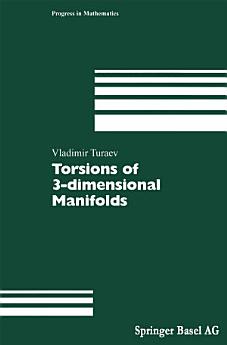Torsions of 3-dimensional Manifolds
2012年12月 · Progress in Mathematics 第 208 本图书 · Birkhäuser
电子书
196
页
report评分和评价未经验证 了解详情
关于此电子书
Three-dimensional topology includes two vast domains: the study of geometric structures on 3-manifolds and the study of topological invariants of 3-manifolds, knots, etc. This book belongs to the second domain. We shall study an invariant called the maximal abelian torsion and denoted T. It is defined for a compact smooth (or piecewise-linear) manifold of any dimension and, more generally, for an arbitrary finite CW-complex X. The torsion T(X) is an element of a certain extension of the group ring Z[Hl(X)]. The torsion T can be naturally considered in the framework of simple homotopy theory. In particular, it is invariant under simple homotopy equivalences and can distinguish homotopy equivalent but non homeomorphic CW-spaces and manifolds, for instance, lens spaces. The torsion T can be used also to distinguish orientations and so-called Euler structures. Our interest in the torsion T is due to a particular role which it plays in three-dimensional topology. First of all, it is intimately related to a number of fundamental topological invariants of 3-manifolds. The torsion T(M) of a closed oriented 3-manifold M dominates (determines) the first elementary ideal of 7fl (M) and the Alexander polynomial of 7fl (M). The torsion T(M) is closely related to the cohomology rings of M with coefficients in Z and ZjrZ (r ;::: 2). It is also related to the linking form on Tors Hi (M), to the Massey products in the cohomology of M, and to the Thurston norm on H2(M).
为此电子书评分
欢迎向我们提供反馈意见。
如何阅读
智能手机和平板电脑
笔记本电脑和台式机
您可以使用计算机的网络浏览器聆听您在 Google Play 购买的有声读物。
电子阅读器和其他设备
如果要在 Kobo 电子阅读器等电子墨水屏设备上阅读,您需要下载一个文件,并将其传输到相应设备上。若要将文件传输到受支持的电子阅读器上,请按帮助中心内的详细说明操作。










